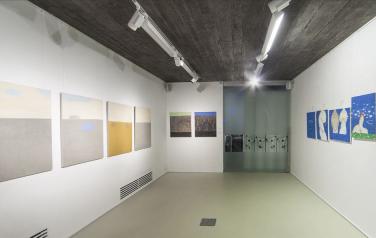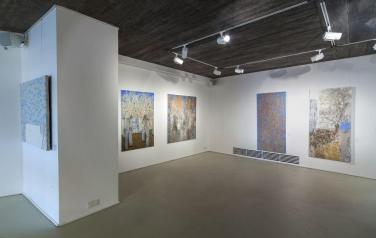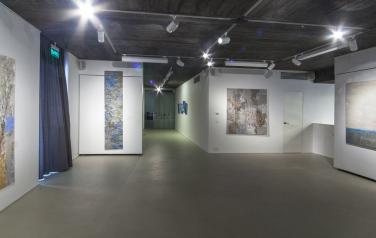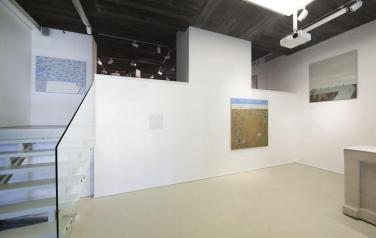Exposition of Victor Sedov displays the artist’s works created for the last five years. What an eye catches firs is that prevailing genre of the exposition is landscape. It not just sets an overall tone, but also contains a number of conceptual starting points of the artist’s creation.
Daring to “rock the world” in some speculative and peculiar way, which is what every artist is after, is interpreted by Sedov in his own manner: as an attempt to see something new in what is quite common and indefinite complexity in what is seemingly simple. This attempt in its entirety is incorporated in landscapes of the Russian midland. Despite obvious familiarity of what is depicted, as if burnt into subconsciousness of a viewer – a country road in March, first snow, summer field with low clouds in the sky – paintings of Victor Sedov is in no case flat and his vision is far from realistic. The artist is keen to catch subtle border dividing reality from abstraction, the one on which a man is balancing every moment of their life. Likewise, an image of a tree, a field or a nameless snow covered village becomes not just a snapshot of an event (or rather eventlessness), but readable symbol. It’s not by chance that the pictures show not a single image of a man: free from stories and dynamics, which are always there if there is a human on, the landscapes serve as a pure transfer of sentiment – a series of free associations, which, after the artist’s design, were presented to viewers’ judgment. However, you can’t dub the pictures lifeless: not accidentally, after the artist’s design, the difference between so welcomed in art naked human body and “naked” winter tree is not so fundamental: individuality, temper and story in both cases assert themselves with confidence.
It’s quite relevant to speak of works of Victor Sedov in almost musical terms: they are much characterized by tranquil tonality and obtuse sound, and with all that intense expression. Another evidence of this is a color aspect: prevalence of light-blue, grey, brown “earthly” colors on canvass is not accidental as well. “Of late, human life seems much brighter than it really is thanks to PCs, TVs, posters”, observes the painter, who counters this forced brightness with neutrality, but at the same time with variety of gray color (which richness is known for remark of Mikhail Vrubel himself).
Succession of works of Victor Sedov to the Russian landscape painting is out of question while their laconism and restraint, which not fling the internal energy and integrity of an image wide open, but lift the veil just a little, subtly referring to another cultural tradition no less mighty and powerful. Meanwhile, one can guess their proximity to the traditional Japanese aesthetics “Vabi” that implies “modest simplicity” of things possessing distinct aesthetic content no matter whether or not they are familiar to an eye, or even trivial. For all that, the landscapes of the painter are for sure up-to-date; for the absence of industrial facilities and other evident markers of the present modern reality, their tangible presence within the borders of “the here and now” is not at all doubted by viewers. This, in turn, poses a series of questions of quite a serious nature: on interrelations of an urbanized man with the nature, their kind and oneself. Philosophic implications, though, are presented by the artist without pathos or posture, but with thoughtful contemplative calmness, which is generally very characteristic of Victor Sedov’s art – art that introduces itself as a work that joins with craft in the highest sense of the word.
Eva Vishnevskaya


















